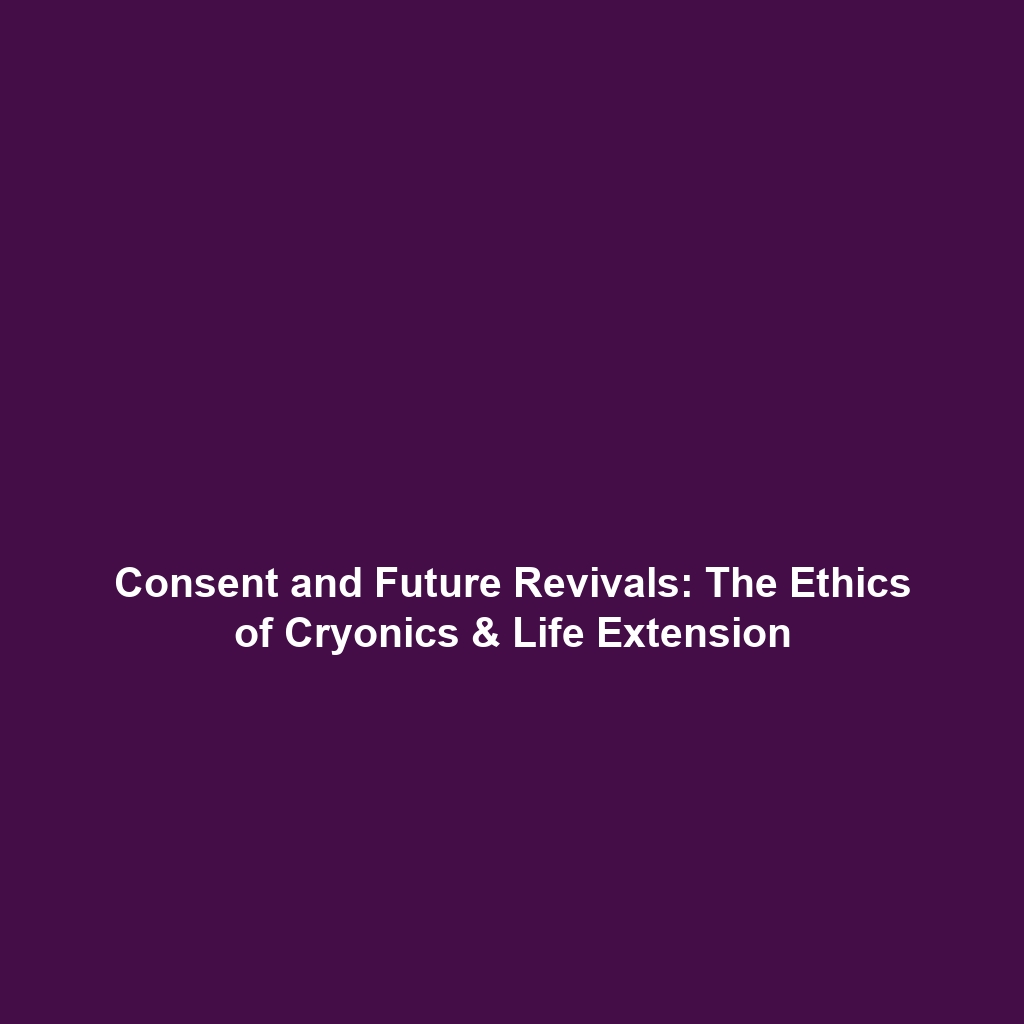Challenges of Vitrification of Large Organs and Effective Thawing in Cryonics & Life Extension
Introduction
The field of cryonics and life extension presents hope for future advancements in medical science, particularly through the process of vitrification. Vitrification, a method used to preserve biological tissues at ultra-low temperatures, poses significant technical hurdles, especially the safe preservation of large organs without damaging their delicate cellular structures. As researchers aim to ensure crystallization does not occur during the cooling process, understanding the complexities of this procedure has become crucial. This article delves deep into these challenges that could determine the future viability of cryonics as a method for life extension.
Key Concepts
Understanding Vitrification
Vitrification involves transforming a substance into a glass-like state, effectively eliminating ice formation, which can cause cellular damage. This technique is fundamental in the preservation of reproductive tissues, organs, and even whole organisms in the realm of cryonics and life extension.
Thawing Challenges
Successfully thawing these preserved specimens without inducing further damage is equally important. Effective thawing strategies are essential to restore the viability of the tissue and ensure functionality, particularly in large organs that are integral for transplantation and life prolongation.
Applications and Real-World Uses
The applications of vitrification in cryonics and life extension are vast, showcasing how these challenges can be addressed:
- Organ Preservation: Vitrification techniques are employed to store organs for transplant, extending the window of time for potential use.
- Fertility Treatments: In assisted reproductive technology, vitrification is used to preserve oocytes and embryos, improving success rates.
- Cryopreservation Research: Investigations into optimal preservation methods can enhance practices within regenerative medicine and cellular therapies.
Current Challenges
Despite advances, several challenges persist in the effective application of vitrification in cryonics and life extension:
- Uniform Cooling: Maintaining consistent cooling rates across large organs is difficult.
- Solution Toxicity: Cryoprotectants necessary for vitrification can be toxic to cells at high concentrations.
- Recovery Processes: Current thawing methods often lead to ice crystal formation that damages cellular structures.
Future Research and Innovations
Continued research is vital for overcoming these challenges in vitrification and thawing. Future innovations may include:
- Advanced Cryoprotectants: Development of better solutions that minimize cellular toxicity while optimizing vitrification.
- Non-Invasive Thawing Techniques: Innovative technologies focusing on gentle warming processes to restore viability in frozen tissues.
- Personalized Vitrification Protocols: Research into tailored methods based on organ type and specific cellular requirements will enhance outcomes.
Conclusion
In summary, the challenges of vitrification of large organs and the effective thawing of delicate tissues remain significant hurdles within the fields of cryonics and life extension. Addressing these barriers is crucial for advancing medical science toward the realistic application of preserving life at its most critical moments. As we look to the future, ongoing research and technological innovation will play an essential role in overcoming these obstacles. To learn more about the intricacies of vitrification and its implications, consider exploring further topics related to cryonics and life extension.
